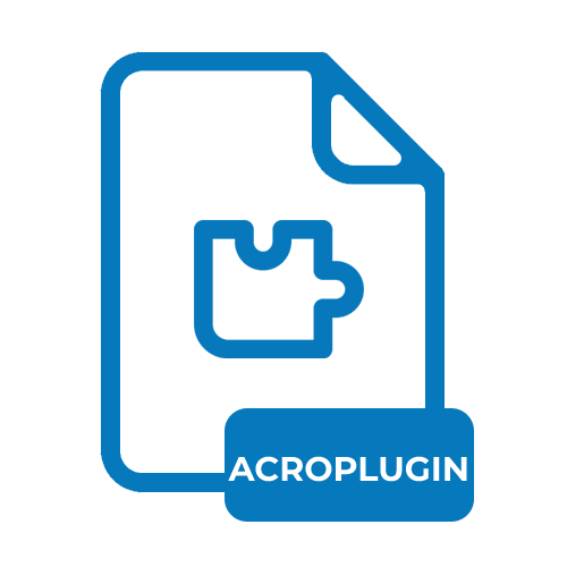.ACROPLUGIN File Extension

Adobe Acrobat Plug-in
| Developer | Adobe Systems |
| Popularity | |
| Category | Plugin Files |
| Format | .ACROPLUGIN |
| Cross Platform | Update Soon |
What is an ACROPLUGIN file?
The .ACROPLUGIN file extension denotes a plugin utilized within Adobe Acrobat. Plugins extend the capabilities of software applications, offering users additional functionalities tailored to specific needs.
In the case of Adobe Acrobat, .ACROPLUGIN files integrate seamlessly with the software, augmenting its utility for diverse tasks ranging from document manipulation to security enhancements.
More Information.
The history of .ACROPLUGIN files intertwines with the evolution of Adobe Acrobat itself. Initially conceived as a tool for creating electronic documents, Acrobat swiftly expanded its scope to encompass a plethora of functions including document conversion, annotation, and collaboration.
.ACROPLUGIN files were introduced to enable third-party developers and Adobe itself to extend Acrobat’s capabilities beyond its core feature set.
These plugins addressed specific needs such as advanced document security, accessibility enhancements, and integration with external systems.
Origin Of This File.
The genesis of .ACROPLUGIN files can be traced back to Adobe’s endeavor to provide a versatile platform for document management and manipulation.
As Adobe Acrobat evolved into the industry-standard PDF solution, the need arose for customizable functionalities to cater to varying user requirements.
Thus, .ACROPLUGIN files emerged as a means to facilitate the integration of specialized features and enhancements into the Acrobat environment.
File Structure Technical Specification.
The structure of .ACROPLUGIN files mirrors that of typical software plugins, comprising executable code, resource files, configuration data, and metadata.
These files are packaged in a format compatible with Adobe Acrobat’s plugin architecture, allowing seamless integration and execution within the application environment.
Technical specifications for .ACROPLUGIN files may vary based on the functionality they provide, with developers adhering to Adobe’s guidelines for plugin development and compatibility.
How to Convert the File?
Converting .ACROPLUGIN files present challenges due to their proprietary nature and complex structure. While direct conversion methods are limited, users can explore alternative approaches to achieve their conversion objectives:
- Reverse Engineering: Analyze the functionality provided by the plug-in and implement equivalent features using alternative tools or programming languages.
- Custom Development: Develop custom scripts or applications to replicate the desired functionalities without relying on external plug-ins.
- Utilize Built-in Features: Leverage Adobe Acrobat’s built-in customization options to recreate the desired functionalities within the software’s native environment.
- Seek Alternative Solutions: Explore alternative plug-ins or software solutions that offer similar functionalities without requiring .ACROPLUGIN files.
Advantages And Disadvantages.
Advantages:
- Customization: .ACROPLUGIN files allow users to customize Adobe Acrobat to their specific needs by integrating additional features and functionalities.
- Enhanced Functionality: Plug-ins extend the capabilities of Acrobat, enabling users to perform tasks beyond the software’s native abilities, such as advanced document manipulation and collaboration tools.
- Third-Party Integration: These extensions facilitate seamless integration with third-party services and solutions, enhancing productivity and efficiency in PDF workflows.
- Tailored Workflows: Users can tailor Acrobat to suit their unique workflows and preferences, improving usability and streamlining document management processes.
- Community Contributions: The availability of .ACROPLUGIN files encourages community-driven development, fostering innovation and expanding the ecosystem of Acrobat plug-ins.
Disadvantages:
- Compatibility Issues: Installing incompatible or outdated plug-ins can lead to compatibility issues with Adobe Acrobat versions, potentially causing software instability or functionality limitations.
- Security Concerns: Malicious or poorly coded plug-ins may pose security risks, exposing users to potential vulnerabilities such as malware injection or data breaches.
- Performance Impact: Certain plug-ins may impose a performance overhead on Adobe Acrobat, leading to slower loading times, increased resource consumption, or system instability.
- Dependency Management: Plug-ins often rely on external dependencies or libraries, complicating installation and management processes and potentially introducing version conflicts or installation errors.
- Vendor Support: Some plug-ins may lack adequate vendor support or documentation, making troubleshooting and maintenance challenging for users.
How to Open ACROPLUGIN?
Open In Windows
- Install compatible plug-ins within Adobe Acrobat on Windows-based systems.
- Ensure that the plug-in is compatible with the specific version of Adobe Acrobat installed on the Windows platform.
Open In Linux
Open In MAC
- Install compatible plug-ins within Adobe Acrobat on macOS-based systems.
- Verify compatibility with the macOS version and Adobe Acrobat edition installed on the system.
Open In Android
Open In IOS
Open in Others
- Adobe Acrobat mobile apps may support certain plug-in functionalities on iOS and Android devices.
- Check the availability of plug-in support for mobile platforms and ensure compatibility with the respective Adobe Acrobat mobile app version.













